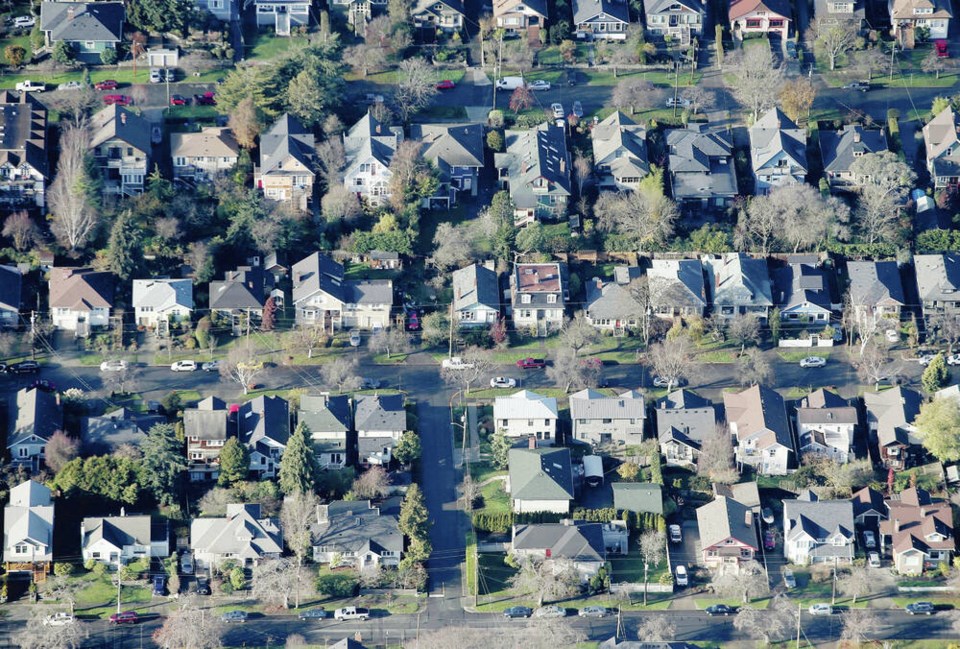A commentary from the Victoria Transport Policy Institute.
Local policy makers face sometimes vicious criticism of policies allowing more compact infill development in urban neighbourhoods — for example, “Victoria councillor pushes back on death threats,” June 26.
These critics argue that upzoning (allowing taller buildings and multi-family housing) and reduced parking requirements simply increases developer profits, does nothing to increase affordability or reduce homelessness, and degrades neighbourhoods.
They are wrong. New research shows that compact infill development can create more affordable, inclusive and livable communities.
Infill recycles urban land in ways that increase its social value. For example, allowing single-family houses, which average $1.2 million, to be replaced by four townhouses that average $750,000, or 12 condominiums that average $550,000, greatly increases the number of families that can live in an area.
If located in a walkable urban neighbourhood those families typically drive half as much as comparable households in automobile-dependent suburbs. This increases overall affordability, public health and resource conservation.
Critics mistakenly focus on new housing prices rather than overall housing and transportation costs. Recent studies find that infill development really does increase affordability and reduces homelessness.
For example, a review titled, The Effect of Market-Rate Development on Neighborhood Rents, by UCLA professors Phillips, Manville and Lens, found that building new market-rate significantly reduces nearby housing prices and rents.
Another recent study, More Flexible Zoning Helps Contain Rising Rents, by the Pew Charitable Trust, found similar results. A major study by economist Evan Mast found that for every 100 new market-rate units built, about 65 units are freed up in existing buildings nearby, accommodating up to 48 moderate- and low-income families.
Even if the new housing initially costs more than low-income households can afford, it increases affordability through filtering, as local families move from existing homes into the new units, making them available to new tenants, and over time as they depreciate in value and add to the lower-priced housing stock.
Increasing housing affordability is the most effective way to reduce homelessness.
In their recent book, Homelessness is a Housing Problem (summarized in The Atlantic magazine article, “The Obvious Answer to Homelessness and Why Everyone’s Ignoring It”), researchers Clayton Aldern and Gregg Colburn found that the most important factors affecting community homelessness rates are the price and availability of basic apartments.
These are far more important than poverty or drug addiction rates, or the supply of social housing.
Where apartments are available for $1,000 per month, homelessness rates are a third of those in cities where basic apartment rents exceed $2,000 per month.
Describing their findings, Colburn explained, “Pretty soon it became very clear that rental costs and vacancy rates were by far the biggest predictor of rates of homelessness in a community.”
A good example is Montreal, where rents are typically a third lower and homelessness are far lower than in peer cities.
According to Canada’s Homelessness Hub, Montreal had just 0.8 people without homes per 1,000 residents, much less than Ottawa (1.4), Victoria (4.9) and Toronto (6.5). Although some people need special supportive housing, increasing the supply of moderate-priced apartments is the most effective way to reduce overall homelessness.
One surprising advocate for infill is the American Association of Retired Persons, which has a Missing Middle Housing website. Why, you might ask, should a senior’s organization support affordable infill housing?
They found that many retirees want to continue living in their neighbourhoods when it’s time to downsize, but need more compact and affordable homes. This is an important point; pro-housing policies are not just for other people: your future self may need housing that does not currently exist.
Some people focus on the negative effects of infill development. To alleviate their fears I recommend visiting Montreal or Paris.
Because Montreal allows townhouses and low-rise apartments on about 70 per cent of its land area — three times as much as Toronto, 91原创 and Victoria — it has very affordable, diverse and walkable neighbourhoods.
Paris is aggressively improving non-auto travel and discouraging vehicle travel in order to reduce traffic problems and improve livability; Paris Mayor Anne Hidalgo was recently reelected because those policies are popular. Infill is the secret sauce that makes these cities great.
This is good news. It indicates that we can address social and environmental problems by allowing more infill housing in our walkable urban neighbourhoods.
>>> To comment on this article, write a letter to the editor: [email protected]



